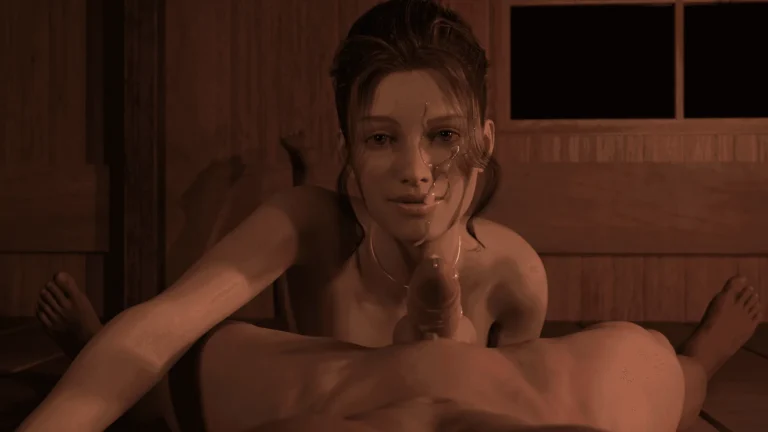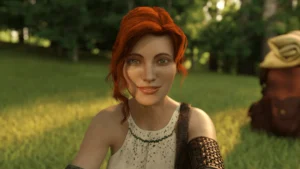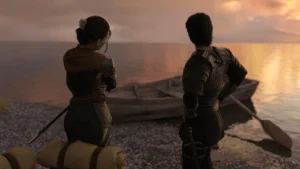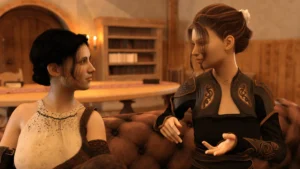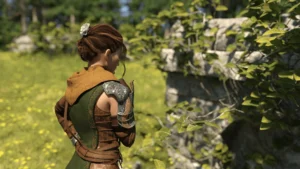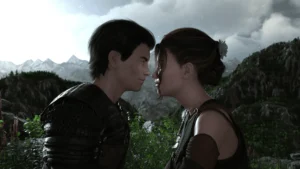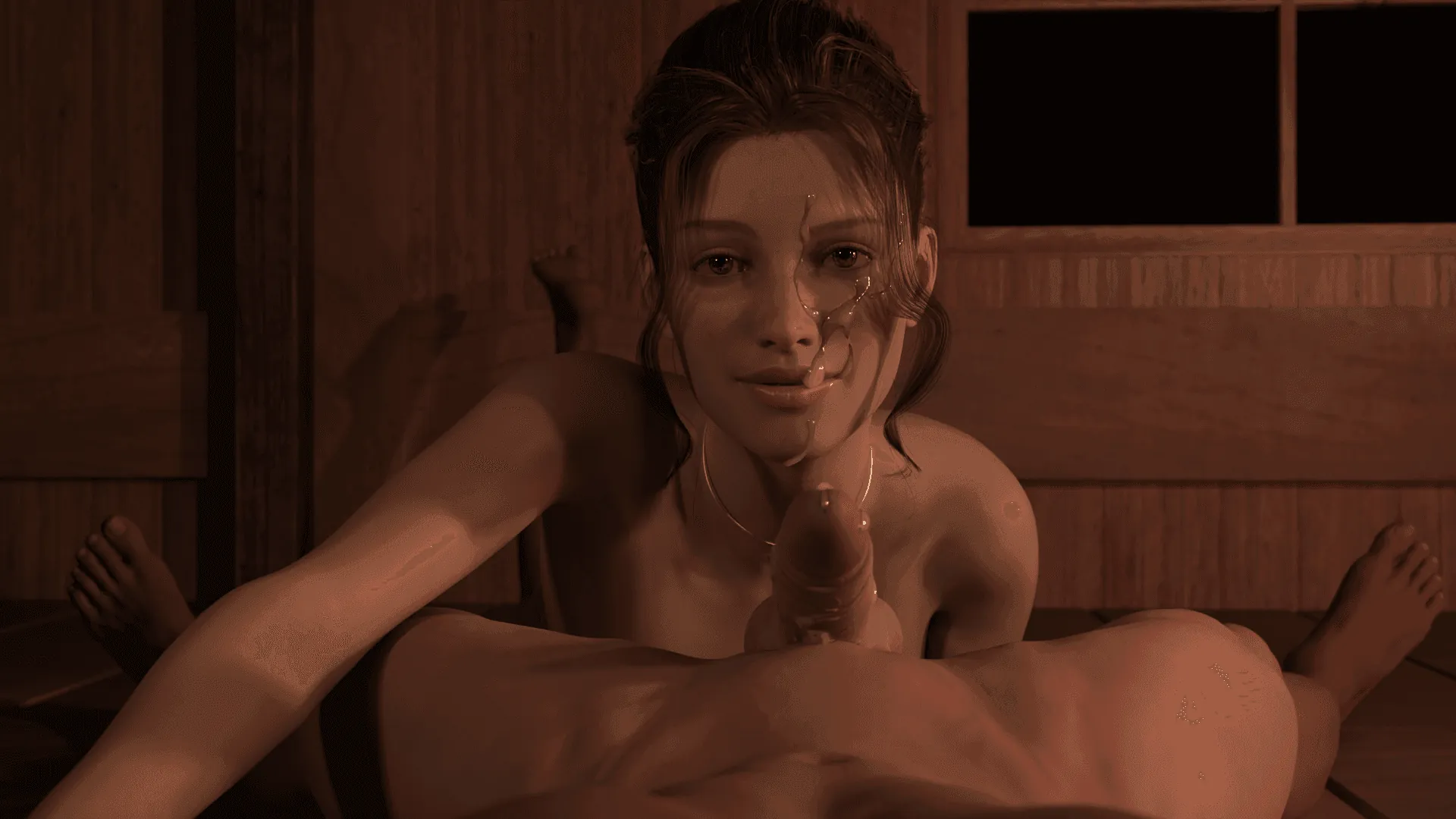
Play Price of Power
Price of Power review
How This Visual Novel Redefines Romance and Adventure Narratives
When I first launched Price of Power expecting typical adult game tropes, the opening cinematic’s lush medieval landscapes and haunting orchestral score immediately signaled something different. This visual novel from PandamanGames subverts expectations by placing emotional storytelling and character development at its core. Through 40+ hours of gameplay across multiple playthroughs, I discovered a narrative experience that rivals premium RPGs in depth – one where romantic relationships evolve organically over years of in-game time rather than through instant gratification.
Narrative Architecture and Character Development
The Three-Act Structure of Emotional Investment
Let’s get real for a second. 🕹️ How many times have you played a game where the story feels as deep as a puddle? You make a choice, and poof—the game barely remembers it five minutes later. Price of Power flips that script with a narrative architecture that’s more like building a cathedral than stacking LEGO blocks. Using Joseph Campbell’s hero’s journey framework, the game structures its story into three acts that actually make you care—like, ugly-cry-into-your-controller levels of investment.
Act 1: The Ordinary World drops you into a cozy medieval village where your biggest worry is whether Maria, your childhood friend, will laugh at your terrible jokes. But beneath the surface? Political tensions bubble like a witch’s cauldron 🧙♂️. By Chapter 5, you’re knee-deep in royal intrigue, and those “harmless” dialogue choices? They start shaping alliances that’ll bite you later.
Act 2: The Ordeal hits hard. Think Game of Thrones meets Pride and Prejudice—you’re navigating betrayal, solving murders, and trying not to mess up your chances with Maria. The slow burn romance mechanics here are chef’s kiss 👌. Every shared glance, every saved memento, builds toward a payoff that’s earned, not handed out like free samples at a grocery store.
Act 3: The Return isn’t just about defeating the big bad. It’s about confronting how your narrative choices consequences reshaped the kingdom—and your relationships. Did you prioritize loyalty to the crown over Maria’s trust? Prepare for a finale that’ll leave you staring at the credits like 😱.
Pro Tip: Replay Chapters 7 and 11. The political subplots branch wildly based on whether you played diplomat or rebel—your romance options hinge on it!
Maria’s Transformational Arc: From Childhood Friends to Lifelong Partners
Maria isn’t your typical “healer with a tragic past” trope. 🩹 Her trauma—losing her family to a coup—isn’t just backstory confetti. It defines her guarded personality and how she reacts to your choices. Push too hard for romance early? She’ll shut down faster than a tavern at last call. � But invest time in her visual novel character development, and you’ll unlock layers softer than medieval silk.
Take Chapter 9’s campfire scene. If you’ve consistently chosen supportive dialogue, Maria finally opens up about her nightmares. The writing here is raw—no cheap jumpscares, just emotional gut-punches. 💔 This isn’t a Bioware-style “flirt until they’re ready” romance. It’s a slow burn that mirrors real vulnerability. By Chapter 12, when she trusts you enough to share her family’s crest (a symbol she’s hidden for years), it feels like a victory.
How does this compare to Bioware RPGs? Imagine if Commander Shepard had to earn Tali’s loyalty and mend her trust after every mission. Price of Power forces you to work for emotional payoffs.
| Romance Path | Key Milestone | Chapter | Impact on Story |
|---|---|---|---|
| Maria (Childhood Friend) | Sharing family crest | 12 | Unlocks secret alliance option |
| Lysander (Rival Knight) | Sparing their life in duel | 8 | Alters faction loyalty outcomes |
| Seraphina (Spy Master) | Revealing true identity | 10 | Changes ending political landscape |
🔥 Hot Take: Maria’s arc works because it’s messy. She’s not a quest marker to check off—she’s a person who heals at her own pace.
Supporting Cast: How Side Characters Enrich Worldbuilding
Ever played a game where NPCs exist just to dump exposition? Price of Power’s side characters have more depth than a dragon’s hoard. 🐉 Take Lysander, the knight who challenges you to duels but sends anonymous apology letters if you win. Or Seraphina, the spy master whose jokes about court politics subtly teach you the kingdom’s history.
These aren’t just quirky companions—they’re pillars of medieval fantasy storytelling. Their personal quests (like helping Lysander reconcile with his exiled brother) weave into the main plot, making the world feel lived-in. Forget “fetch 10 wolf pelts”; here, side missions involve negotiating trade treaties that affect which regions support your cause.
And let’s talk about emotional payoff in gaming. When you finally reunite Lysander with his brother in Chapter 11, the game doesn’t just give you a gold trophy. It reshapes military alliances, opens new romance options, and even changes how characters greet you in towns. 🏰
Fun Fact: Ignoring side characters can literally lock you out of the “best” ending. The game remembers every snub, every rushed conversation.
🌟 Why It Works:
– Depth over quantity: Fewer characters, but each has branching arcs
– Tie-ins to politics: Even a baker’s subplot about grain shortages affects siege outcomes
– Silent consequences: That bard you brushed off in Chapter 6? He’s later leading protests against you
So next time you’re tempted to speed-click through dialogues, remember: in Price of Power, the narrative choices consequences aren’t just about who you kiss—they’re about what kind of leader (and human) you become. 🛡️
Through its meticulous attention to character psychology and refusal to prioritize shock value over substance, Price of Power sets a new standard for emotional storytelling in adult-oriented games. The 18-month development cycle between Acts 3-4 shows in the polished narrative payoffs that reward patient players. For those seeking meaningful interactive fiction rather than cheap thrills, this visual novel proves mature themes can coexist with artistic integrity when handled thoughtfully.
